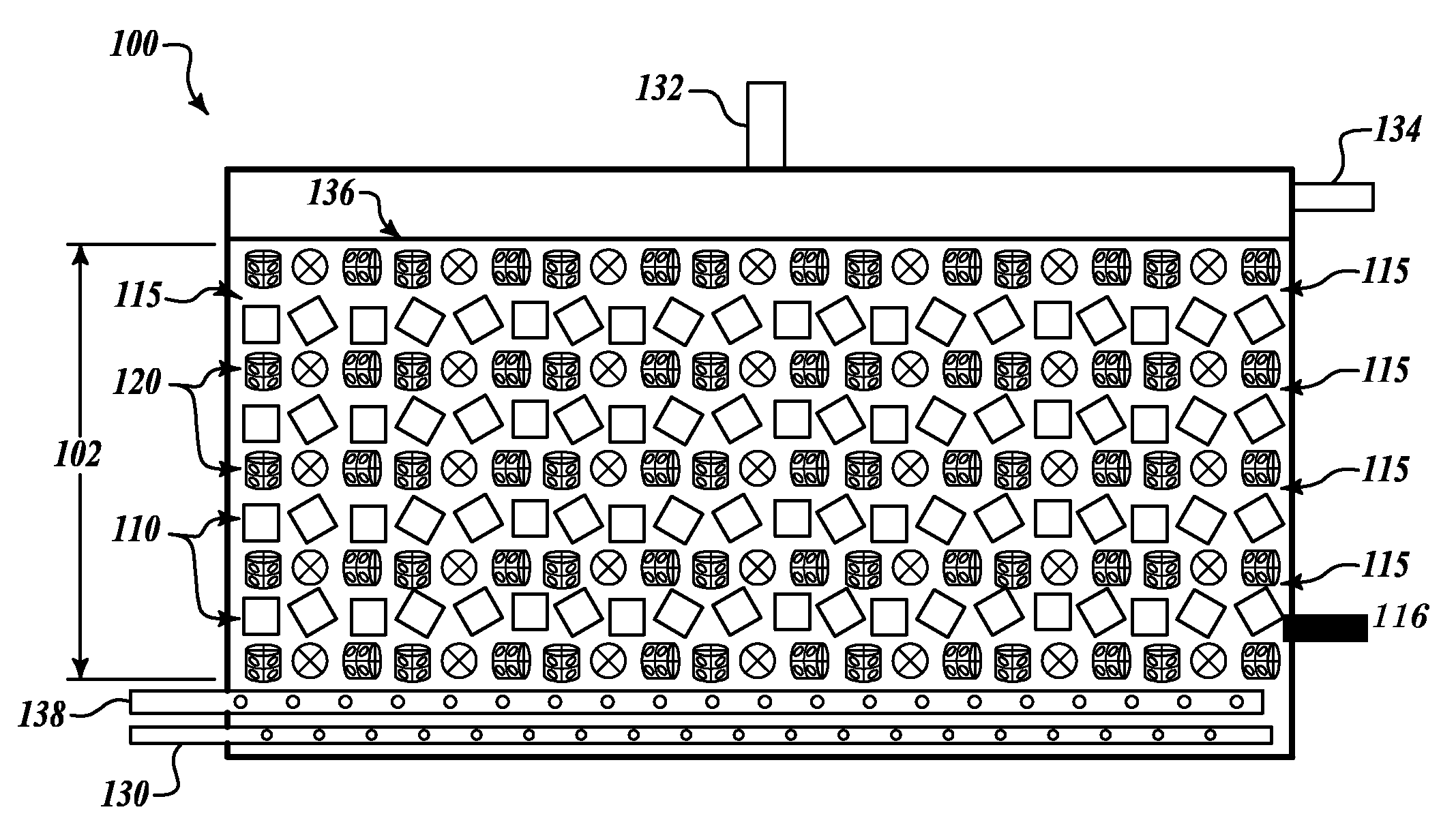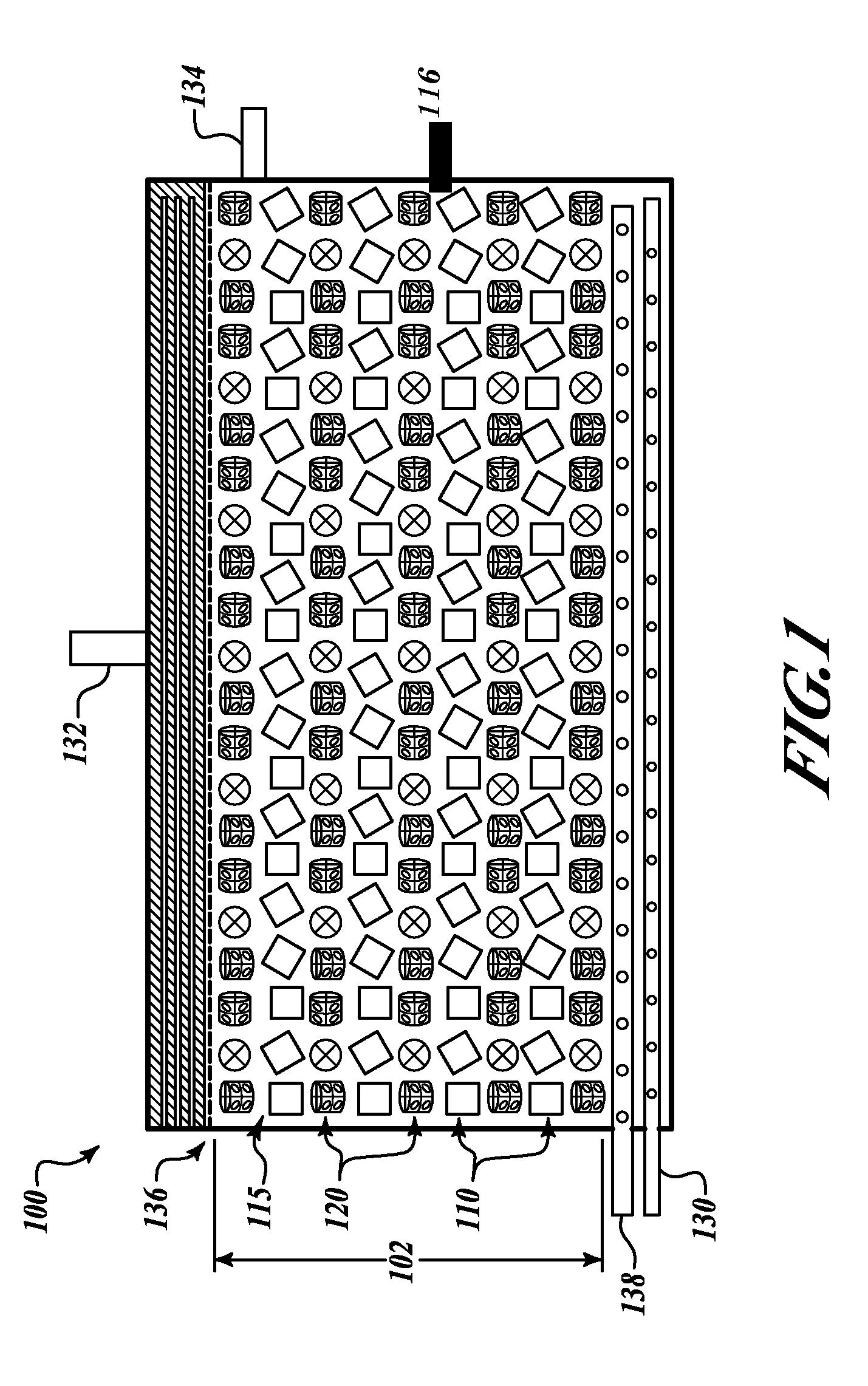Process reactor with layered packed bed
a reactor and layered technology, applied in the field of reactors, can solve the problems of poor fluid flow distribution and restrict the even distribution of biochemical reactants in the randomly packed bed, and achieve the effect of reducing the channeling through the bed and improving the residence time distribution of the reactor
- Summary
- Abstract
- Description
- Claims
- Application Information
AI Technical Summary
Benefits of technology
Problems solved by technology
Method used
Image
Examples
examples
[0090]A series of experiments were carried out to evaluate the effect of the orientation of open body spacers with the porous biomass supports, i.e. polyurethane foam.
example i
[0091]Rigid open cylinders (plastic) were obtained from Jaeger Products, Inc., under a trade designation of HiFlow. These open cylinders were used as open body packing elements in biodegradation experiments. The biologically active bodies were of hydrophobic polyurethane foam (PUF) obtained from Foamex, Inc., under a trade designation SIF II. This foam had a polyol content of 75% by weight (approximately 40% by weight ethylene oxide and 60% by weight propylene oxide) and a toluene diisocyanate content of approximately 25 to 35% by weight of reactants. The foam had 15-20 pores per inch, and pores were of varying sizes.
[0092]FIG. 5 illustrates three reactor configurations that were used. PUF porous biomass supports 110 and HiFlow open body packing elements 120 were mixed together in different proportions in order to achieve a certain amount of openness or void space in each bioreactor system. Each bioreactor was of the same volume (1 liter) and each reactor had the same quantity of op...
example ii
[0101]Another set of waste water treatment bioremediation studies were performed to compare the bulk removal efficiency of a randomly dispersed system of open body packing elements and porous biomass supports in a control with a reactor bed according to an embodiment of the invention that has alternating layers of the same supports and packing elements.
[0102]As shown in FIG. 6, four reactors were used, arranged in pairs. Each pair 60, 61 comprised two reactors 100, 101 linked in series so that effluent from the first reactor 100 was the feed stream to the next reactor 101. Using the procedure of Example I, the Total Organic Carbon (TOC) removal efficiencies for each of the systems were determined. The control pair of reactors, two 1-liter reactors 100, 101 linked in series, was filled with 0.5 inch HiFlow packing 120 and 0.5 inch SIF II foam blocks 110 randomly dispersed, while the other set 61 was filled with the packing arranged in alternative layers of HiFlow 120 and PUF blocks 1...
PUM
| Property | Measurement | Unit |
|---|---|---|
| hydraulic residence time | aaaaa | aaaaa |
| hydraulic residence time | aaaaa | aaaaa |
| residence times | aaaaa | aaaaa |
Abstract
Description
Claims
Application Information
 Login to View More
Login to View More - Generate Ideas
- Intellectual Property
- Life Sciences
- Materials
- Tech Scout
- Unparalleled Data Quality
- Higher Quality Content
- 60% Fewer Hallucinations
Browse by: Latest US Patents, China's latest patents, Technical Efficacy Thesaurus, Application Domain, Technology Topic, Popular Technical Reports.
© 2025 PatSnap. All rights reserved.Legal|Privacy policy|Modern Slavery Act Transparency Statement|Sitemap|About US| Contact US: help@patsnap.com



